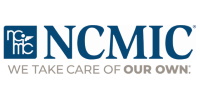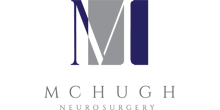Are patients and practitioners still required to wear a face mask?
Recently, the New York State Department of Health (DOH) weighed-in, backing away somewhat from the Department’s previous face mask mandate for certain health care settings, principally facilities regulated by the Department under Articles 28, 36 and 40 of the New York State Public Health Law (PHL) relating to hospitals, home healthcare services, and hospices, respectively.
A web-release issued by the DOH effective February 12, 2023 stated, in part:
“The pandemic is not over, yet we are moving to a transition. As we do, and with safe and effective vaccines, treatments, and more, we are able to lift the State's masking requirement in [Article 28, 36, and 40] health care settings as operators now develop and implement their own facility-specific plans, in accordance with federal CDC guidance and the level of transmission in their areas." (See: https://health.ny.gov/press/releases/2023/2023-02-10_mask_guidance.htm)
The Department of Health is not throwing caution to the wind, however.
Although the DOH is no longer mandating the use of masks in the particular healthcare settings cited, as the DOH web-release notes: “The Department continues to affirm the importance of masking as a vital and effective infection prevention strategy.”
The DOH was even more strident in an accompanying letter sent to facility administrators:
"The New York State Department of Health affirms the importance of non-pharmacological infection prevention strategies in health care settings such as appropriate usage of well-fitting face masks. This is a vital infection prevention strategy with a sound evidence base and represents a clear infection prevention standard.
“All personnel, regardless of COVID-19 vaccination status, in a healthcare setting (i.e., facilities or entities regulated under Articles 28, 36, and 40 of the Public Health Law) should wear an appropriate face mask according to the Centers for Disease Control and Prevention’s (CDC) Interim Infection Prevention and Control Recommendations for Healthcare Personnel During the Coronavirus Disease 2019 (COVID-19) Pandemic.
“The current CDC recommendations apply regardless of COVID-19 vaccination status and are based on Transmission Levels, not on COVID-19 Community Levels. The above CDC recommendations also apply to all visitors two years of age and older and able to medically tolerate a face covering/mask.
“Facilities or entities regulated under Articles 28, 36, and 40 should develop and implement policies for personnel and visitor masking based on the CDC and NYSDOH recommendations above. Facility policies should be at least as strict as CDC recommendations and may be stricter at the discretion of the facility.”
The DOH advisory letter also urged “private medical and dental practices [to] strongly consider adhering to these COVID-19 infection prevention and control recommendations” as well.
What does all of this mean for chiropractors in private practice?
As a highly educated and trained professional, a chiropractor should exercise her or her best professional judgment, evincing the utmost concern for the care and welfare of the members of the public in your community as well as the patients in your practice.
In the exercise of professional judgment, doctors of chiropractic
- should be mindful of any local guidance or directives concerning facemasks issued by your local county or city health department;
- should be aware of the point prevalence of COVID (and other viruses Influenza, RSV) locally;
- should be aware of the virulence of COVID strains (and other viruses) locally;
- should be attentive to the concerns of staff and individual patients;
- may want to weigh whether the doctor, staff or a particular patient has been immunized; and
- may want to consider whether the doctor, staff or a particular patient has any concurrent comorbidities.
The CDC provides the following guidance concerning face masks
Implement Source Control Measures
Source control refers to use of respirators or well-fitting facemasks or cloth masks to cover a person’s mouth and nose to prevent spread of respiratory secretions when they are breathing, talking, sneezing, or coughing. Information about types of masks and respirators, including those that meet standards and the degree of protection offered to the wearer, is available at: Masks and Respirators (cdc.gov). People, particularly those at high risk for severe illness, should wear the most protective form of source control they can that fits well and that they will wear consistently.
Healthcare facilities may choose to offer well-fitting facemasks as a source control option for visitors but should allow the use of a mask or respirator with higher-level protection that is not visibly soiled by people who chose that option based on their individual preference. Additional information is available in the FAQ:
What should visitors use for source control (masks or respirators) when visiting healthcare facilities?
Source control options for Health care providers (HCPs) include:
- A NIOSH-approved particulate respirator with N95 filters or higher;
- A respirator approved under standards used in other countries that are similar to NIOSH-approved N95 filtering facepiece respirators (Note: These should not be used instead of a NIOSH-approved respirator when respiratory protection is indicated);
- A barrier face covering that meets ASTM F3502-21 requirements including Workplace Performance and Workplace Performance Plus masks; OR
- A well-fitting facemask.
When used solely for source control, any of the options listed above could be used for an entire shift unless they become soiled, damaged, or hard to breathe through. They should be removed and discarded after the patient care encounter with known COVID and a new one should be donned.
When SARS-CoV-2 Community Transmission levels are high, source control is recommended for everyone in a healthcare setting . . . in areas of the facility where they could encounter patients.
-
A HCP could choose not to wear source control when they are in well-defined areas that are restricted from patient access (e.g., staff meeting rooms) if they do not otherwise meet the criteria described below and Community Levels are not also high. When Community Levels are high, source control is recommended for everyone.
- Have suspected or confirmed SARS-CoV-2 infection or other respiratory infection (e.g., those with runny nose, cough, sneeze); or
- Had close contact (patients and visitors) or a higher-risk exposure (HCP) with someone with SARS-CoV-2 infection, for 10 days after their exposure; or
- Reside or work on a unit or area of the facility experiencing a SARS-CoV-2 outbreak; universal use of source control could be discontinued as a mitigation measure once no new cases have been identified for 14 days; or
- Have otherwise had source control recommended by public health authorities
Individuals might also choose to continue using source control based on personal preference, informed by their perceived level of risk for infection based on their recent activities (e.g., attending crowded indoor gatherings with poor ventilation) and their potential for developing severe disease.
For example, if an individual or someone in their household is at increased risk for severe disease, they should consider wearing masks or respirators that provide more protection because of better filtration and fit to reduce exposure and infection risk, even if source control is not otherwise required by the facility. HCP and healthcare facilities might also consider using or recommending source control when caring for patients who are moderately to severely immunocompromised.
Implement Universal Use of Personal Protective Equipment for HCP
If SARS-CoV-2 infection is not suspected in a patient presenting for care (based on symptom and exposure history), a HCP should follow Standard Precautions (and Transmission-Based Precautions if required based on the suspected diagnosis).
As community transmission levels increase, the potential for encountering asymptomatic or pre-symptomatic patients with SARS-CoV-2 infection also likely increases. In these circumstances, healthcare facilities should consider implementing broader use of respirators and eye protection by HCP during patient care encounters.
For example, facilities located in counties where Community Transmission is high should also consider having HCP use PPE as described below:
- NIOSH-approved particulate respirators with N95 filters or higher used for:Eye protection (i.e., goggles or a face shield that covers the front and sides of the face) worn during all patient care encounters.
- All aerosol-generating procedures (refer to Which procedures are considered aerosol generating procedures in healthcare settings?).
- All surgical procedures that might pose higher risk for transmission if the patient has SARS-CoV-2 infection (e.g., that generate potentially infectious aerosols or involving anatomic regions where viral loads might be higher, such as the nose and throat, oropharynx, respiratory tract).
- NIOSH-approved particulate respirators with N95 filters or higher can also be used by HCP working in other situations where additional risk factors for transmission are present, such as the patient is unable to use source control and the area is poorly ventilated. They may also be considered if healthcare-associated SARS-CoV-2 transmission is identified and universal respirator use by HCP working in affected areas is not already in place.
- To simplify implementation, facilities in counties with high transmission may consider implementing universal use of NIOSH-approved particulate respirators with N95 filters or higher for HCP during all patient care encounters or in specific units or areas of the facility at higher risk for SARS-CoV-2 transmission.
- Eye protection (i.e., goggles or a face shield that covers the front and sides of the face) worn during all patient care encounters.
In Summary
A chiropractic doctor is a highly educated and trained professional who should use and exercise his or her best professional judgment when it comes to considering whether the use face masks in professional practice is warranted, with an eye for the safety and welfare not only for his or her own wellbeing and that of immediate family members, but also for the members of the practice staff and the patients each serves.




